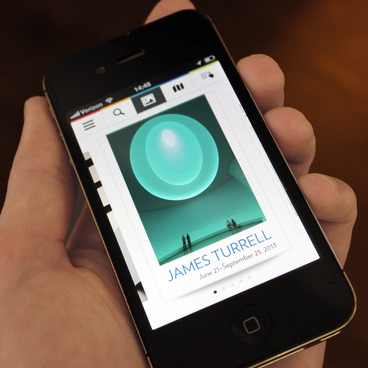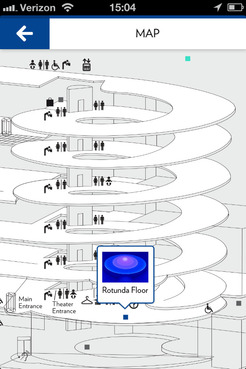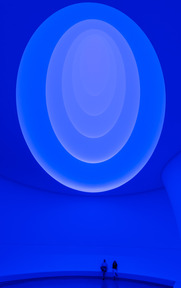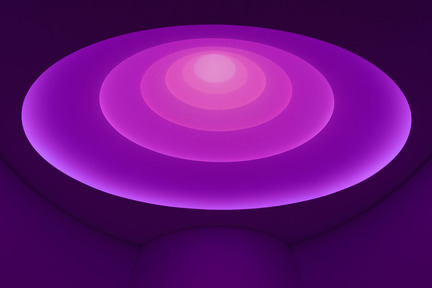The Guggenheim App
The iconic Frank Lloyd Wright-designed museum launches a mobile app to coincide with the opening of artist James Turrell’s solo exhibition



Replacing the embarrassingly bulky recorder and headset once required for an audio tour, the Guggenheim’s new mobile app comes flush with insightful information, images and video to enhance past and present art exhibitions held in the iconic Frank Lloyd Wright-designed museum. While the Guggenheim isn’t the first to use the mobile platform—the MoMA introduced their own app in May of 2012, for example—the launch comes just in time to coincide with the hugely anticipated James Turell exhibition. As Turell’s first solo exhibition at a New York museum since 1980, the captivating installation-based exhibit marks the most dramatic transformation of the museum’s open-air space ever executed.


Known for his sensory captivating installations based on perception, light, color and space, in which the viewer becomes vividly aware of their senses, Turrell doesn’t disappoint with the centerpiece of the show, “Aten Reign.” Using white fabric and a hidden, suspended aluminum structure, the installation closes off the museum’s famous rotunda, leaving the viewer to experience the transformative light from one semi-disorienting vantage point: directly underneath it. Lit by five rings of veiled LEDs and a single opening at the highest point—to allow day light to filter into the space—the deep hues of the installation slowly change to reveal gorgeous gradients that seem to transcend time and form. “Aten Reign” allows the viewer to “see the physicality of light and, at the same time, see it disintegrate into its more ephemeral nature,” explained Turell.


Accompanying the new, site-specific “Aten Reign” are five additional works first produced by Turrell earlier in his career. The most compelling for us were 1967’s “Afrum 1 (White),” which employs high-intensity light projections to create the illusion of a cube, and 1968’s “Ronin,” which uses light to build architecture where, in fact, there is none. As the exhibition itself is vastly experiential, and based on previous work, the Guggenheim app provides a wealth of information to improve the museum-goer’s experience. An extensive biography makes relevant connections between works, and multiple video interviews with the artist and installation team offer a behind-the-scenes look at the various works shown. Additionally, an interactive map guides the user through the exhibit, with audio files—and written transcriptions of such—available for each body of work.


And, as one might expect, the app does well to inform the user of the significance of the museum itself. Details on Frank Llyod Wright and the museum’s storied history are available in great detail, as well as information on previous and upcoming exhibitions. Download the free Guggenheim app from iTunes, and be sure to visit the James Turrell exhibit, open today 21 June through 25 September 2013.
App images by Graham Hiemstra, all images of James Turrell’s work by David Heald courtesy of the Solomon R. Guggenheim Foundation, New York












